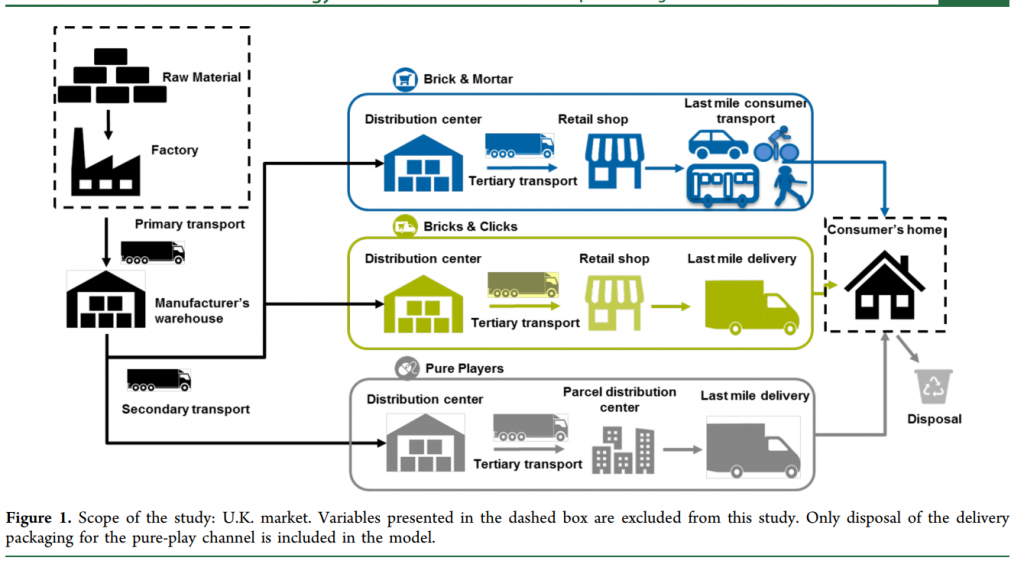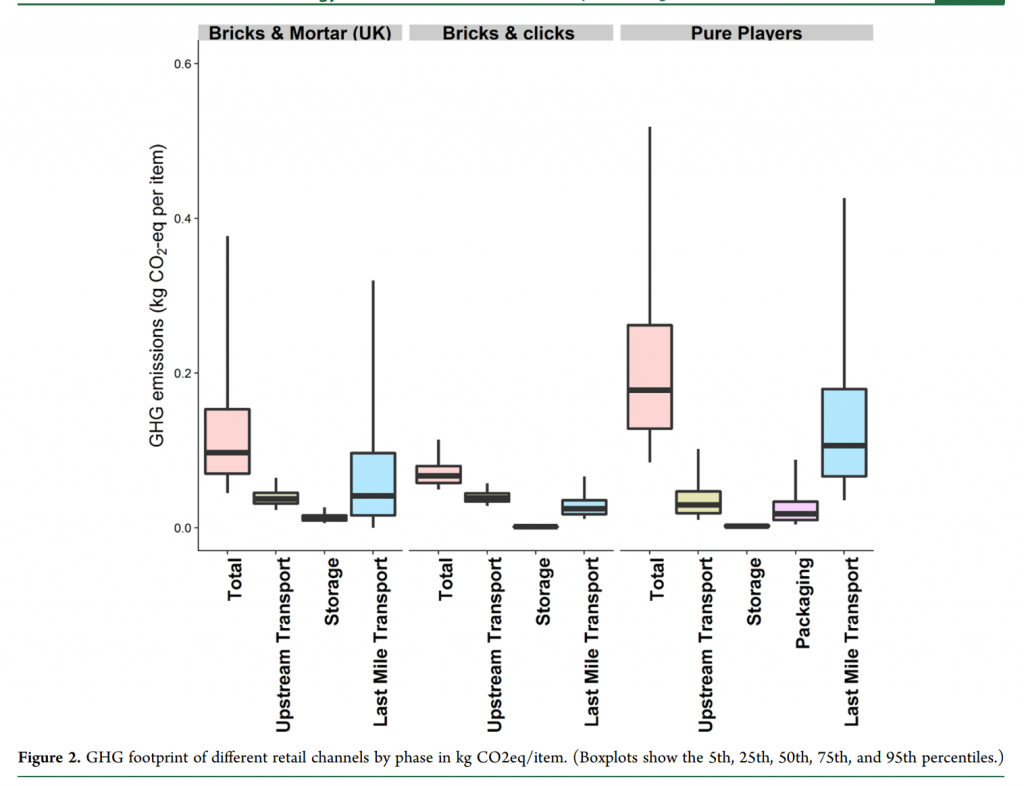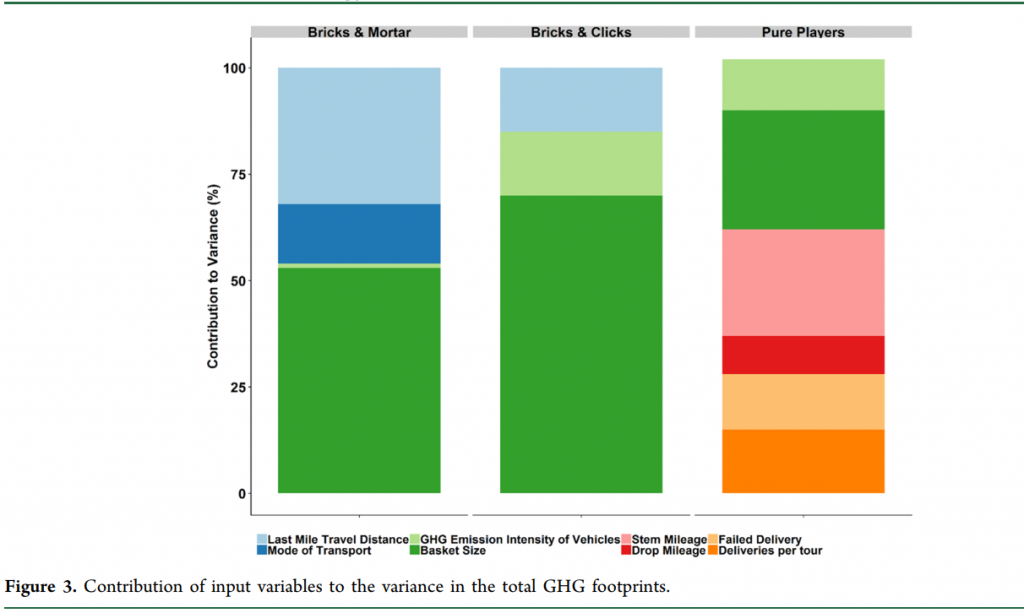Does online shopping have a larger or smaller carbon footprint?
Well, it depends.
But depends on what?
In a most recently-published study by Shahmohammadi et al (2020) published in Environmental Science & Technology, the authors highlight that the last-mile transport is one of the most important drivers of carbon emissions, among other things.
What I like about this study is that the authors test out the sensitivities of a host of variables and see how they affect the total carbon footprint of a supply chain. Those variables include:
- Distance per delivery
- Number of items per delivery
- GHG emission intensity of delivery vans
- Packaging volume and weight
- …
There are three main channels: (1) Bricks and Mortar (2) Bricks and clicks, i.e., online retailing but delivery from a store-based supplier and (3) Pure play, i.e., online retailer and delivery using third-party logistics provider.

Their main findings can be summarized in this graph:

The graph reveals some very interesting results:
- If you just look at the averages (the center lines of the pink bars), then pure players actually have the highest carbon footprint. Bricks and clicks is the most efficient.
- Last-mile transport (blue bars) is the largest component for bricks and mortar and pure players. For bricks and mortar channels it was the consumers who emit the most by driving, whereas for pure players it was the delivery vans/trucks that emit.
- In addition, last-mile transport has the largest variability in carbon footprint for all channels.
- To continue on the finding on variability, the authors did a great job visualizing the contributions of major drivers. See below:

From above we can see that basket size is the largest driver in variability for all channels. Last-mile transport, on the other hand, only affect the variability in brick & mortar, and bricks & clicks. It does not affect the variability for pure players because the driving routers for each delivery truck is mostly fixed. However, for those delivery trucks, stem mileage (from depot to delivery zones) and drop mileage (from zone to destinations) as well as failed delivery and number of deliveries per tour all affect the variability in emissions.
The authors also show that there are large differences across countries in the last-mile carbon footprints for each type of channels.
In sum, this is a terrific study with lots of interesting insights. I highly recommend for those who are interested in this topic.

Leave a Reply
You must be logged in to post a comment.